5 Ways That ‘Beyond Westworld’ Is Just Like ‘Westworld’
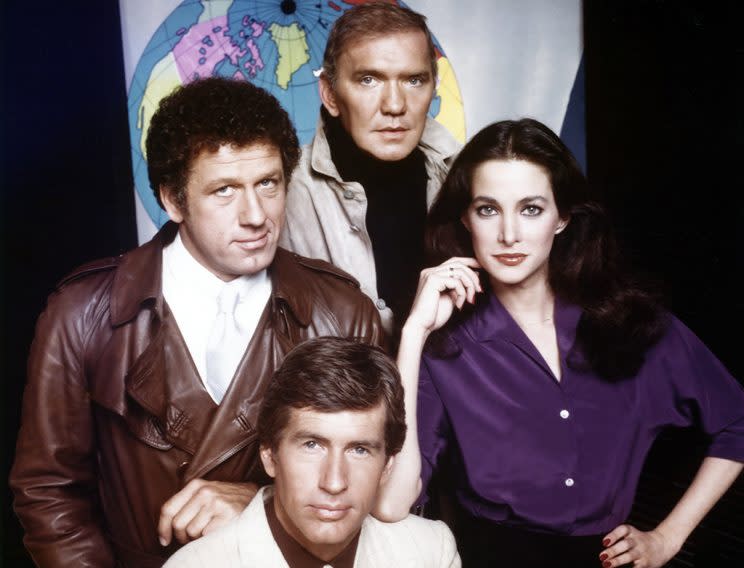
Warning: This post contains spoilers for HBO’s Westworld.
Wondering how you’re going to fill that Westworld-shaped hole in your heart when HBO’s hit series wraps up its freshman season on Dec. 3? We’ve got the answer: Sign up for a Warner Archive account and go Beyond Westworld. Warner’s streaming service, which is home to a number of vintage movies and TV series, is the only place where you can binge this short-lived TV spinoff of Michael Crichton’s original 1973 feature film, which premiered in March 1980 on CBS. Created by the author himself, Beyond Westworld produced a mere five episodes, only three of which aired, before getting the ax. After that, the Westworld franchise lay dormant until Jonathan Nolan and Lisa Joy came along to revive it for HBO.
Related: Catch Up on ‘Westworld’ With Our Recaps
To be sure, the new Westworld and Beyond Westworld couldn’t seem more different on the surface. Where the HBO version takes place exclusively in the robot-filled theme park, the CBS series unfolds entirely in the real world. And where Nolan and Joy have constructed a densely layered, serialized narrative, Crichton’s approach was to keep the stories episodic. But if you binge both series back to back, certain unexpected similarities reveal themselves. Here are five ways that Westworld and Beyond Westworld are almost the same show.
Their connection to the original movie is tenuous
The creator of Westworld, Michael Crichton, may have been closely involved with Beyond Westworld, but he played it fast and loose in the continuity department. Although the series is billed as a sequel to his 1973 blockbuster (and, to a lesser extent, its 1976 follow-up, Futureworld, which Crichton wasn’t part of), it introduces characters and conflicts that were nowhere to be found in the original film.
For example, the pilot, “Westworld Destroyed,” picks up in the wake of a robot uprising that has upended the park’s general routine. Three representatives of Delos — the corporation that owns the park — arrive to survey the damage, their ranks including security expert John Moore (Jim McMullan), agent Laura Garvey (Judith Chapman), and robot overseer Joseph Oppenheimer (William Jordan). They encounter a familiar figure: the black-suited gunslinger played by Yul Brynner in the film. Except that: a) this gunslinger looks nothing like Brynner (he’s played by Alex Kubik instead) and b) this gunslinger was also burned to a crisp at the end of the movie. In other words, Beyond Westworld really only functions as a sequel to Westworld if you ignore the entire last act of Westworld.
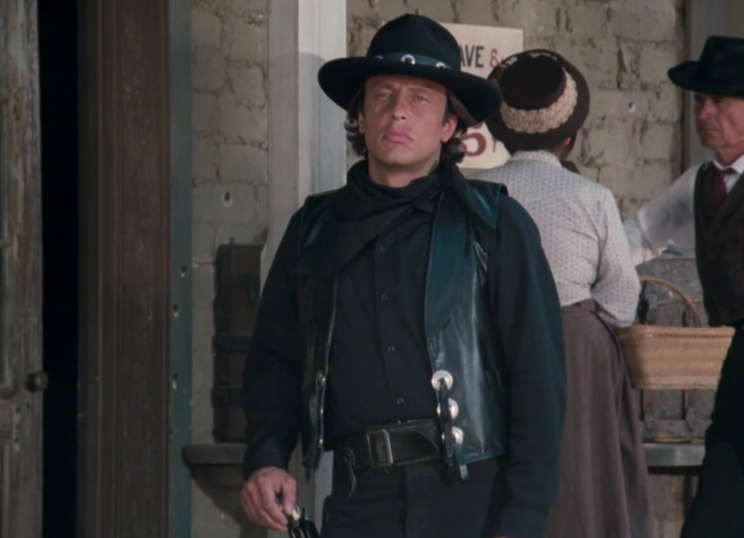
In HBO’s version, of course, Ed Harris has taken over the role of the Man in Black, and — barring any season finale plot twist — he’s a human, not a robot. (Another gunslinger reference is literally slipped into the background of the sixth episode.) That’s just one of the ways that the new series has, in the words of Jonathan Nolan, been paying “playful, but not literal” homage to Crichton’s film, incorporating certain imagery and storytelling choices without positioning itself as a direct continuation.
Related: ‘Westworld’ Star Jimmi Simpson Talks Fan Theories and William’s Future
The robots’ creators have gone rogue
Robert and Arnold, meet Joseph and Simon. Both of these teams of scientists were responsible for creating the robot population of their respective versions of Westworld, before their partnerships blew up in spectacular fashion … taking the park along with them. As Westworld has unfolded over the past nine weeks, we’ve learned that Robert Ford (Anthony Hopkins) and his former partner, Arnold Weber, launched their grand experiment with dreams of creating the most advanced examples of artificial intelligence in human history. But Arnold wanted to go one step farther, and gift his creations with consciousness, whereas Ford appeared content to let them remain playthings for wealthy visitors. That disagreement led to Arnold’s demise — although we’ve recently learned that Ford brought him back to life, after a fashion, in robot form, as Bernard Lowe (Jeffrey Wright) — as well as the first attempt to destroy Westworld — a near-cataclysmic incident that has yet to be explained in full.
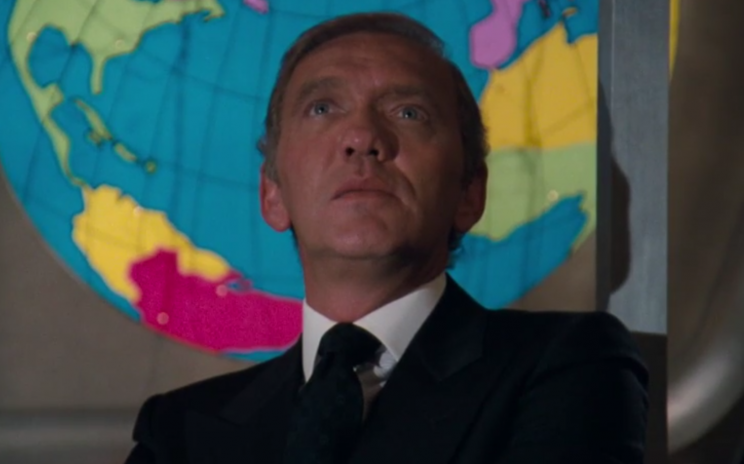
Where Arnold’s uprising failed, Simon Quaid’s succeeded and gives Beyond Westworld its jumping-off point. The former assistant to Joseph Oppenheimer, Quaid (James Wainwright), feels strongly that their robots are being wasted in satisfying the whims of the rich when they could be running the world — under his command, naturally — instead. So he initiates the rebellion that takes his “children” out of their birthplace and into the larger world, where Quaid plugs them into his various schemes for world domination, from commanding a nuclear submarine to assuming control of a lucrative oil company.
The Delos corporation tries to keep the peace
Ford, after years of being somewhat hands-off in the storytelling department — ceding the park’s storylines to its Narrative Director, Lee Sizemore (Simon Quarterman) — is now taking an active role in creating an all-new narrative. And his renewed interest has the Delos board worried, since they’ve been benefiting financially, and intellectual propertywise, thus far. That’s why operations expert Theresa (Sidse Babett Knudsen) — before her untimely demise — tried to undermine his authority, working alongside newly arrived executive director Charlotte (Tessa Thompson). To be clear, the Delos board members are neither the outright hero nor villain of this tale; they’re just staunch defenders of the status quo.
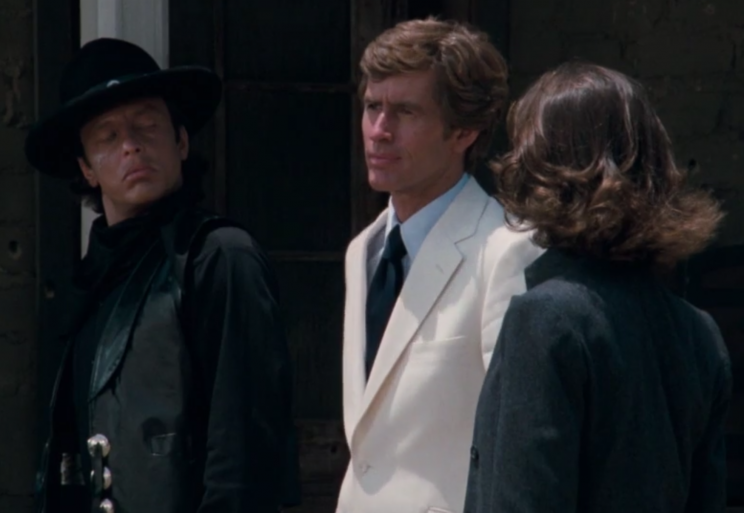
Delos is also trying to defend the status quo in Beyond Westworld — the status quo in this case being “maintain human freedom and prevent robot-controlled tyranny.” Thus, whenever Quaid initiates a plan, stalwart John Moore turns up to thwart it. Strangely, Moore is more eager to play defense than offense. There’s no attempt on his part — or anyone else at Delos, for that matter — to actively pursue Quaid to his various lairs. The corporation also doesn’t appear willing to equip its security officers with robot-fighting weapons. In battle after battle, Moore basically wins by accident with whatever happens to be at hand, whether by spraying fire extinguisher foam in a robot’s eyes or pushing another robot over a balcony. But hey, a win’s a win!
Misogyny is permitted … and encouraged!
Throughout the first season of Westworld, Logan (Ben Barnes) has repeatedly demonstrated how the park unlocks the alpha male pig in all of its male guests. And his future brother-in-law, William (Jimmi Simpson) is kinder, but not necessarily more enlightened, based on the way he appoints himself protector of innocent-seeming farm girl Dolores (Evan Rachel Wood) … even though it more often appears that she’s protecting him.
Related: ‘Westworld’ Creators Explain the Show’s Existential Use of Violence and Sexual Assault
Freed from their theme-park confines, the female robots in Beyond Westworld are no longer required to be 24/7 sexbots. Instead, it’s the flesh-and-blood women who are objectified. Between the first and second episodes, Chapman’s more serious-minded Delos scientist, Laura Garvey, was apparently cut loose and replaced by comely agent Pamela Williams (Connie Sellecca, who later became The Greatest American Hero’s sidekick) who shares a vaguely romantic past with Moore. To be fair, Pam does get to join John in the field. In the second episode, “My Brother’s Keeper,” for example, she tracks Quaid’s robots to a football team and goes undercover to root them out.
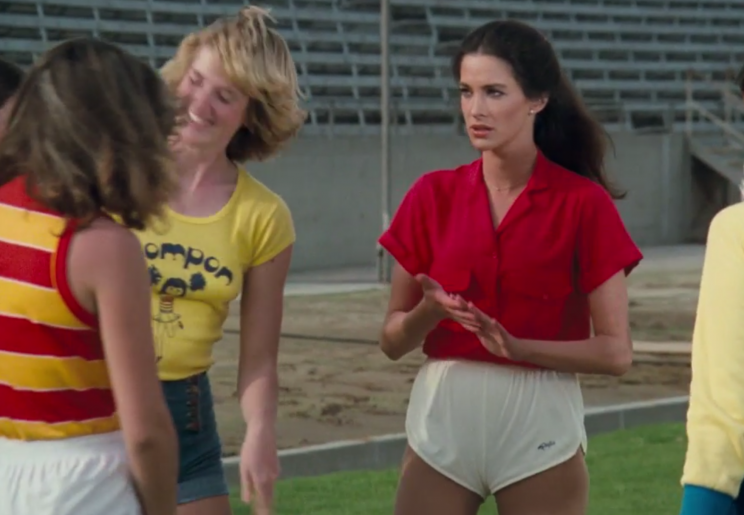
Too bad that “going undercover” involves dressing up as a cheerleader in short shorts and trying to seduce the QB. She also has to put up with her partner’s condescending commentary. After deducing that the quarterback in question is actually the robot, she tries to clue John in by pointing out the inhuman speed with which he throws a football. Moore’s smirking response: “He’s supposed to do that.” Not for nothing, but we’d love to have seen Pam go all Maeve on Moore’s posterior in that moment.
Robots can be modeled on real people
Beyond providing viewers with a great late-season plot twist, the revelation that Bernard has been built in Arnold’s image carries interesting implications for the rest of Westworld’s robotic citizenry. Who else in the park happens to be wearing the face and form of an actual human being? And going one step further, which of the characters we believe are humans will actually turn out to be robots in disguise?
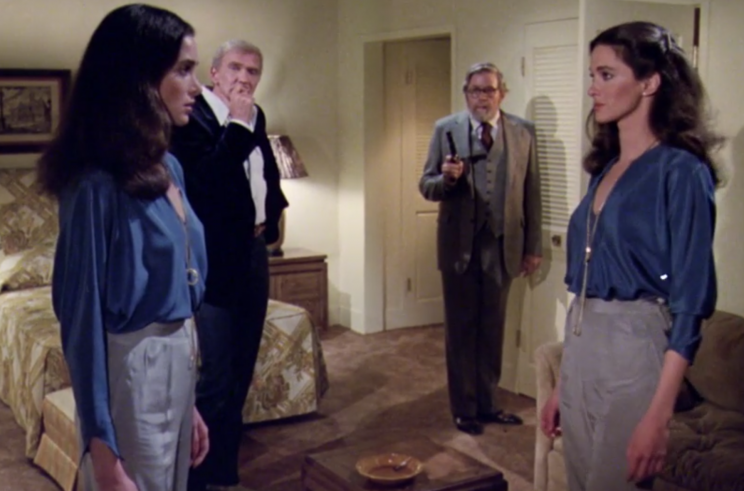
Like Ford, Quaid didn’t have any objection to designing robots after human beings. In the second episode, Pamela meets her metal Doppelgänger, whom Moore defeats by heroically … shoving her off a balcony. (We told you his triumphs are mostly accidental!) And in the fifth and final episode, “Takeover,” which never aired on CBS, it’s revealed that Quaid previously replaced the governor of California with a robot and nobody noticed. Hmmm, that kinda sounds like the time that California voted a Terminator into office…
Beyond Westworld is streaming on Warner Archive. Westworld airs Sundays at 9 p.m. on HBO, and past episodes can be streamed on HBOGo and HBONow.


